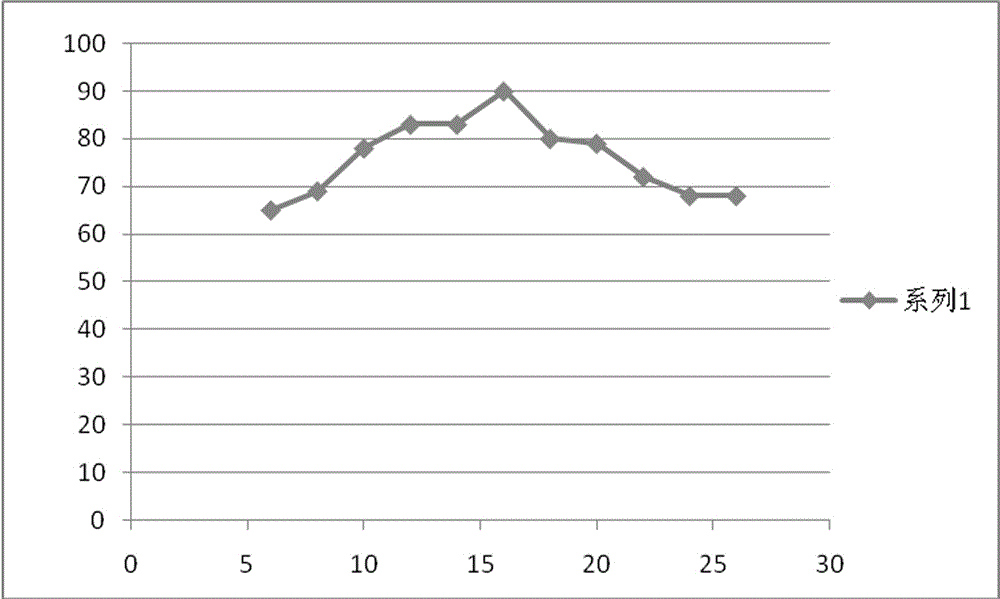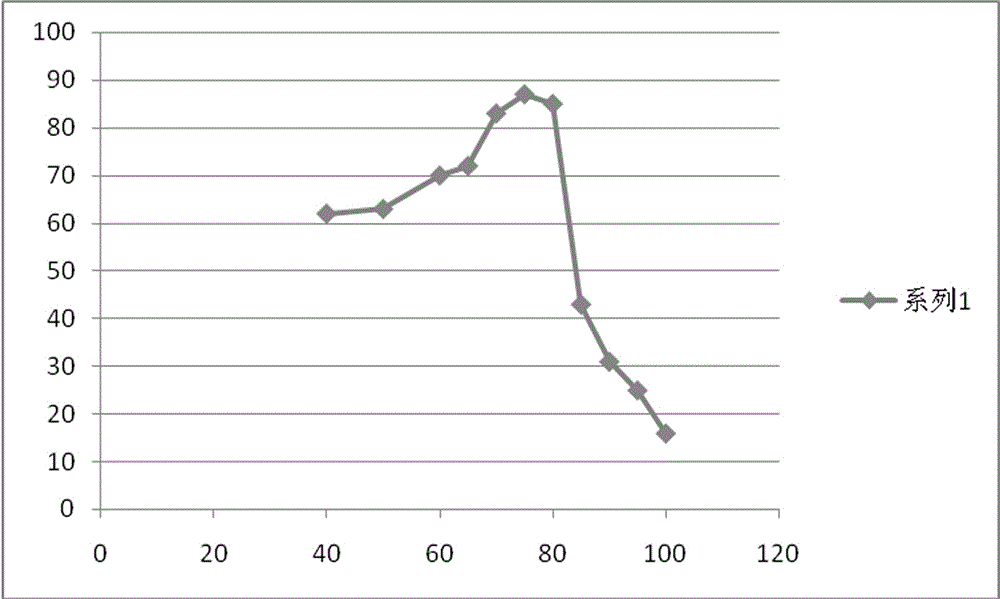Ecological konjak planting method
A planting method and technology of konjac, which is applied in the field of crop cultivation, can solve the problems of soil deterioration, impact on human health, and great harm, and achieve the effects of preventing excessive humidity and temperature, good disinfection effect, and ensuring germination
- Summary
- Abstract
- Description
- Claims
- Application Information
AI Technical Summary
Problems solved by technology
Method used
Image
Examples
Embodiment 1
[0022] Embodiment 1: a kind of planting method of ecological konjac, comprises the following steps:
[0023] a. Site selection and site preparation: Select a locust forest with a soil pH ≤ 6, plow twice to a depth of 50-60 cm, then form ridges between the trees, and dig nests on the ridges with a size of 25-35 cm;
[0024] b. Seed selection and disinfection: choose disease-free and complete konjac seeds as the taro seeds; the taro seeds are sterilized for the first time, spread the taro seeds on the bamboo sieve, and expose them to the sun for 2 days; the taro seeds are sterilized for the second time , transfer the first sterilized taro seeds to a dry heat sterilizer for sterilization for 50 hours, before transferring, adjust the relative humidity inside the dry heat sterilizer to 10-20%, and the temperature to 75°C;
[0025] c. Sowing: Prepare the base fertilizer before sowing, mix the farmyard manure and potassium sulfate compound fertilizer with a weight ratio of 3:2 evenly...
Embodiment 2
[0029] Embodiment 2: a kind of planting method of ecological konjac, comprises the following steps:
[0030] a. Site selection and site preparation: select citrus woodland with soil pH ≤ 6, plow 3 times to a depth of 50-60 cm, then form ridges between the trees, and dig nests on the ridge surface with a size of 25-35 cm;
[0031] b. Seed selection and disinfection: choose disease-free and complete konjac seeds as the taro seeds; the taro seeds are sterilized for the first time, spread the taro seeds on the bamboo sieve, and expose them to the sun for 3 days; the taro seeds are sterilized for the second time , transfer the first sterilized taro seeds to a dry heat sterilizer for sterilization for 60 hours, before transferring, adjust the relative humidity inside the dry heat sterilizer to 10-20%, and the temperature to 70°C;
[0032] c. Sowing: Prepare the base fertilizer before sowing, mix the farmyard manure and potassium sulfate compound fertilizer with a weight ratio of 3:2...
Embodiment 3
[0036] Embodiment 3: a kind of planting method of ecological konjac, comprises the following steps:
[0037] a. Site selection and site preparation: select citrus woodland with soil pH ≤ 6, plow 3 times to a depth of 50-60 cm, then form ridges between the trees, and dig nests on the ridge surface with a size of 25-35 cm;
[0038] b. Seed selection and disinfection: choose disease-free and complete konjac seeds as the taro seeds; the taro seeds are sterilized for the first time, spread the taro seeds on the bamboo sieve, and expose them to the sun for 2 days; the taro seeds are sterilized for the second time , transfer the first sterilized taro seeds to a dry heat sterilizer for sterilization for 72 hours, before transferring, adjust the relative humidity inside the dry heat sterilizer to 10-20%, and the temperature to 80°C;
[0039]c. Sowing: Prepare the base fertilizer before sowing, mix the farmyard manure and potassium sulfate compound fertilizer with a weight ratio of 3:2 ...
PUM
 Login to View More
Login to View More Abstract
Description
Claims
Application Information
 Login to View More
Login to View More - R&D
- Intellectual Property
- Life Sciences
- Materials
- Tech Scout
- Unparalleled Data Quality
- Higher Quality Content
- 60% Fewer Hallucinations
Browse by: Latest US Patents, China's latest patents, Technical Efficacy Thesaurus, Application Domain, Technology Topic, Popular Technical Reports.
© 2025 PatSnap. All rights reserved.Legal|Privacy policy|Modern Slavery Act Transparency Statement|Sitemap|About US| Contact US: help@patsnap.com


